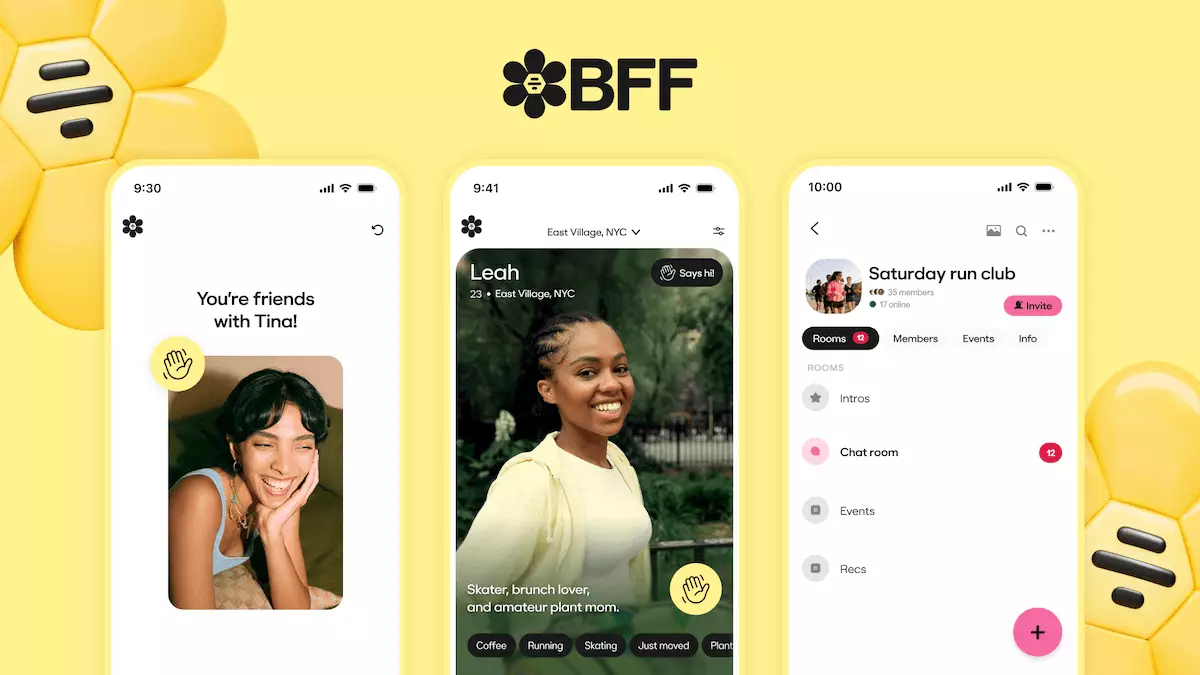In a landscape saturated with dating apps and fleeting social platforms, Bumble’s strategic reimagining of its BFF app marks a significant shift toward fostering authentic, community-based relationships. This move is far more than a mere rebrand; it signals a conscious effort to prioritize meaningful interactions over superficial swiping. As young adults increasingly seek genuine camaraderie beyond the confines of romantic pursuits, Bumble’s reinvention aligns perfectly with evolving social dynamics. Its new focus on group engagement and community building sets a compelling precedent: the future of social apps lies in creating spaces conducive to collaboration, shared interests, and real-life connections. This pivot might be viewed as an astute response to the limitations of traditional one-on-one matching; it recognizes that friendship thrives in collective environments, where conversations and activities unfold in a more organic, supportive manner.
Integration of Community Features: A Game Changer
The introduction of group functionalities revolutionizes the user experience. By enabling users to create, join, and participate in various chat groups, Bumble BFF moves beyond individual profiles into the realm of collective socialization. These groups serve as virtual hubs for communities of different sizes — from small circles sharing local interests to massive groups rallying around larger hobbies. The addition of an in-app calendar further enhances this ecosystem, facilitating event planning and coordination that bridge virtual interactions with real-world meetups. This integration encourages users to develop genuine friendships through ongoing engagement, mutual interests, and shared activities, rather than one-off chats or algorithm-driven matches. Importantly, the platform’s approach emphasizes safety and inclusivity, cultivating an environment where users can feel secure and respected. Although discovery features are yet to be released, the existing functionalities lay a solid foundation for a richer, more dynamic social experience.
Adapting to Changing User Behaviors and Market Trends
The relaunch highlights Bumble’s strategic response to shifting social behaviors among younger generations. The desire for community and authentic connection is evident; nearly half of young adults crave more friends to share activities with and seek local platforms to foster neighborhood ties. This transformation stems from broader societal trends where online interactions increasingly complement, or sometimes substitute, in-person relationships. Bumble recognizes this shift, aligning its core offerings towards community-oriented features that resonate with its user base. This focus not only bolsters engagement but also counters the decline in revenue faced by the company. Despite a recent dip in profits, Bumble’s investment in social community features suggests a long-term vision: creating a platform that emphasizes relationship quality over quantity. This shift is reminiscent of a broader industry awakening, from casual dating to meaningful social bonding.
Strategic Significance Amidst Industry Competition and Financial Challenges
Bumble’s relaunch occurs at a critical juncture for the company, amid both competitive pressure and financial headwinds. The saturated app market, with rivals like Clockout and Les Amís, underscores the importance of differentiation. By focusing on community, safety, and real-world engagement, Bumble seeks to carve a niche that competitors might find difficult to replicate. The phasing out of Geneva, a platform that failed to generate revenue, underscores a calculated move towards value-driven innovation. This strategic pivot signals a willingness to invest in community-building features that could foster loyalty and sustain growth over the long term. It also indicates Bumble’s recognition that their future depends less on individual matching and more on cultivating vibrant, engaged communities where users find lasting connections. Though their financial performance has experienced setbacks, this bold direction suggests resilience and a belief in the transformative power of genuine friendship—both online and offline—at the heart of social well-being.
The Promise and Challenges of Building Genuine Online Communities
While Bumble’s renewed focus on community offers exciting possibilities, it also comes with inherent challenges. Creating a safe, inclusive environment in large groups requires continuous moderation, innovative safety features, and vigilant community management. Trust is paramount; users need assurance that their personal spaces are protected from abuse and harassment. Furthermore, effective discovery tools will be crucial for users to find relevant groups without feeling overwhelmed or disoriented. If Bumble can successfully navigate these hurdles, it may position itself as the go-to platform for fostering authentic friendships in the digital era. Such an achievement would not only redefine what friendship apps can accomplish but also influence the broader social tech industry to prioritize community-driven experiences over transient interactions. Ultimately, Bumble’s bold move is less about competing in the existing marketplace and more about pioneering a new paradigm — one where technology amplifies the human desire for fellowship, belonging, and shared experiences.

